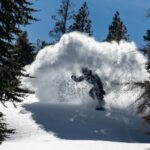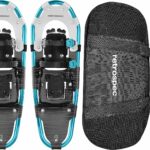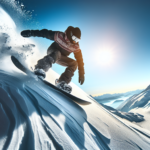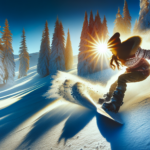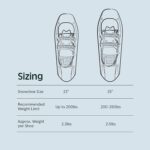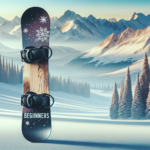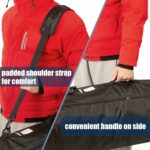You’re no stranger to the thrill of slicing through fresh powder on a crisp winter morning. It’s about that time to treat yourself to a new snowboard, but you’re not quite sure what to look for. In this article, “What To Look for When Buying A Snowboard”, we’ll break down all the considerations you need to arm yourself with the best gear for your chilly adventures. Whether you’re an experienced slope master or a beginner with a heart full of ambition, let’s tackle this seemingly overwhelming task together and get you geared up for the season. Find out how to choose just the right snowboard that takes your winter sport experience to the next level.
Understanding Different Types of Snowboards
When it comes to snowboarding, it’s not a one-size-fits-all approach. There are different types of snowboards designed specifically for different riding styles and conditions. Your board choice can greatly influence your performance and enjoyment. Let’s delve into the most common types of snowboards.
Freestyle boards
If you blame gravity for keeping you from doing aerial stunts, maybe you should get acquainted with a freestyle board. These boards are specially designed for snowboarders interested in park and pipe riding, jumps, tricks, rails, and overall freestyle performance. They are typically lightweight, shorter, and easy to maneuver, making them perfect for those seeking versatility and agility.
Freeride boards
Who needs established trails when you can blaze your own in untracked terrains? Freeride boards are for those who have an adventurous streak, love carving their own routes, and have little interest in being confined to groomed runs. These boards are generally longer to offer stability and often feature a directional shape for better control and float in deep snow.
All-mountain boards
If you’re the kind of person who wants freedom to roam and explore all areas of the mountain, you’ll love an all-mountain board. These versatile boards are designed to handle all conditions and terrain, from groomed runs and park riding to backcountry exploration. They’re generally stiffer than freestyle boards and offer improved carving and speed.
Powder boards
Would you like to float freely across deep snow without sinking or losing control? The powder boards have your back. These boards have a wider nose and a tapered, narrower tail that helps with optimal flotation and tracking in deep snow.
Choosing the Right Size
Just as it doesn’t make sense to wear shoes that don’t fit, using a snowboard that’s not the right size for your height, weight, and foot size can hinder your performance. Here are factors to consider when determining the right board size.
Board length and your height
Contrary to the popular belief, the height isn’t the main factor in determining the right board length. However, it still plays a role. Shorter people are more likely to feel comfortable and in control with shorter boards while taller people may prefer longer boards.
Board width and your shoe size
Remember this: A snowboard that’s too narrow for your boot size will have you faceplanting due to toe or heel drag. On the contrary, a snowboard that’s too wide may compromise your ability to make quick, smooth turns. So, always match board width with your shoe size.
Weight and board length
Here’s the golden rule: Heavier riders need longer boards, while lighter riders can do with shorter boards. Longer boards offer more surface area, which helps support the weight and provide stability.
Considering Your Skill Level
What’s your skill level? Are you a beginner, intermediate, or advanced snowboarder? Different skill levels demand different types of snowboards.
Boards for beginners
If you are new to snowboarding, you need a board that will make it easier to learn the basics. Beginners’ boards are typically softer, forgiving, and help you master turns without catching an edge.
Boards for intermediate riders
You’ve mastered the basics, and now you are looking for a board that will help you level up. Intermediate boards offer a balance of forgiveness and performance, allowing you to grow your skills and tackle more challenging terrains.
Boards for advanced riders
Riding down black diamond terrains like it’s a cakewalk? Maybe you should consider an advanced board. These boards are stiffer, more challenging to handle, but provide unrivaled precision, response, and stability at high speeds.
Evaluating the Snowboard’s Flex
The flex of a snowboard, or the board’s responsiveness when you apply pressure, plays a huge role in the overall performance of the board. It can range from soft to medium to stiff.
Soft flex boards
Soft flex boards tend to be more forgiving and easier to maneuver, making them ideal for beginners. They are also a go-to choice for freestyle riders due to their capacity for easier tricks and landings.
Medium flex boards
The Goldilocks of flex options, medium flex boards offer versatility, making them a great option for all-mountain riders or anyone who enjoys a variety of terrains.
Stiff flex boards
Perfect for high speed and deep powder, stiff flex boards offer maximum responsiveness and control. These are typically the choice for advanced riders and those venturing into the backcountry or tackling ungroomed terrains.
Understanding the Snowboard’s Profile
Often overlooked by beginners, the profile refers to the board’s shape from its side view. It determines the board’s performance, turn initiation, and landing stability.
Camber profile
Resembling an arch, a camber profile offers unmatched edge control, stability, and pop. If you love high-speed rides and impressive carving power, you’ll appreciate a board with a camber profile.
Rocker profile
Also known as a reverse-camber, a rocker profile resembles a banana shape. It offers excellent float in powder and buttery, catch-free turn initiation.
Flat profile
As the name suggests, a flat profile is flat from tip to tail. It bridges the gap between a rocker and a camber, offering a mix of stability, edge control, and maneuverability.
Hybrid profile
The hybrid profile combines the elements of camber, rocker, and flat profiles to deliver versatility and all-around performance. Depending on their construction, they can be powder-focused or equally comfortable across all terrains.
Choosing the Right Shape
Similar to the profile, snowboard shape has a huge impact on a board’s performance.
Directional shape
Directional boards are designed with a specific front (nose) and back (tail) and are meant for riding mostly in one direction. Ideal for freeriding, these boards deliver smooth control and power in varied conditions.
True twin shape
Perfect for freestyle and park riders, true twin boards are completely symmetrical with identical nose and tail. They perform exactly the same whether you are riding regular or switch.
Directional twin shape
A middle-ground between the directional and true twin boards, directional twins have the versatility to handle both freestyle and freeride terrains.
Taking into Account the Snowboard’s Materials
Just as with any product, the materials used in a snowboard influence its durability, performance, and overall quality.
Different types of cores
Most commonly made of wood, the core is the heart of the snowboard, affecting its weight, strength, and flex. Higher-end boards often feature lightweight, yet strong wood species or even bust out composite materials for extra performance.
Types of laminates
These layers sandwich the core and affect the snowboard’s responsiveness and durability. They can be made of various materials like carbon fiber, glass fiber or Kevlar.
Edge materials
A good edge is essential for effective turning and carving. Mostly, these are made from steel and can be full-wrap or partial depending on the board’s design and purpose.
Evaluating the Snowboard’s Base
The base of a snowboard is what connects you with the snow, and this has a significant impact on your glide and speed.
Extruded base
Extruded bases are made from a simple manufacturing process, making them more affordable and easier to repair. However, compared to more sophisticated bases, they are slower and less durable.
Sintered base
Sintered bases are made using a higher-quality manufacturing process and offer faster speed, better wax absorption, and superior durability compared to extruded bases.
Choosing the Right Bindings
Bindings connect your boots to your board, transmitting your body movements to the board.
Determining the right size
The size of your bindings should match your boot size. Ill-fitted bindings can lead to poor control and discomfort.
Choosing the right type
There are three types of bindings: strap-in, rear-entry, and step-in bindings. Your choice will depend on your preference for comfort, ease of use, and performance, as each type has its strengths and weaknesses.
Understanding binding flex
Just like boards, bindings have different flex ratings—from soft to stiff. A softer flex is more forgiving and comfortable while a more rigid flex provides increased control and responsiveness.
Considering Other Important Features
A few other features worth considering before buying a snowboard include the sidecut, torsional stiffness, and the effective edge.
Snowboard sidecut
A snowboard’s sidecut is the curve along the edge of the board. A smaller sidecut radius results in tighter, sharper turns, while a larger radius leads to wider, more stable turns.
Torsional stiffness
This refers to the board’s resistance to twisting. A stiffer board provides better edge hold and responsiveness at high speed, but it’s harder to maneuver at low speed.
Snowboard effective edge
This is the length of the edge that is in contact with the snow when the board is in a turn. A longer effective edge provides more stability and better edge hold, especially at high speeds.
Choosing the right snowboard can seem daunting, but by considering these aspects you can make an informed decision that suits your riding style, ability, and personal preferences. Happy shredding!
- What Snowboard Bindings Should I Get? - January 23, 2024
- What Size Screws For Snowboard Bindings? - January 23, 2024
- How To Snowmobile On Water? - January 23, 2024

